How To Allocate Retirement Funds?
Key Takeaway:
- Assessing Retirement Goals: Before allocating retirement funds, it’s important to determine your retirement goals and the lifestyle you want to maintain in retirement.
- Diversification: Allocating retirement funds involves diversifying your portfolio of assets including employer-sponsored retirement plans, individual retirement accounts (IRAs), and other investment options. This can help manage risk and improve returns.
- Monitoring Retirement Portfolio: It’s important to periodically review and rebalance your portfolio to ensure it aligns with your retirement goals and adjusts to market conditions.
Tired of worrying about how to best invest your retirement funds? You’re not alone. This article will provide you with valuable insight and actionable advice on how to properly manage and allocate your retirement investments. So don’t worry, you’re only a few steps away from feeling confident and secure about your financial future.
Assessing Retirement Goals
Ascertaining Retirement Objectives
Retirement investment decision making heavily relies on the retirement objectives of an individual, and their risk tolerance. Age, income level, and current savings portfolio are pivotal in assessing retirement goals. The amount of income that a retired person will require depends on their lifestyle choices.
A noteworthy consideration is life expectancy. People are living longer, and therefore, it is necessary to have enough savings to support them after retirement. A sound investment plan should reflect this aspect of life. When setting retirement goals, it is essential to stick to achievable objectives and stay current with market trends to ensure a manageable portfolio.
With the right goals in mind, it is a matter of allocating funds to various investment vehicles and money-management platforms in a way that is in line with the individual’s risk tolerance and preferences.
For a stress-free retirement, it is essential to remain focused on the overarching objective, which is to have enough funds to maintain one’s desired lifestyle. Allocating retirement funds in accordance with this objective and market trends will provide that sense of security in the future.
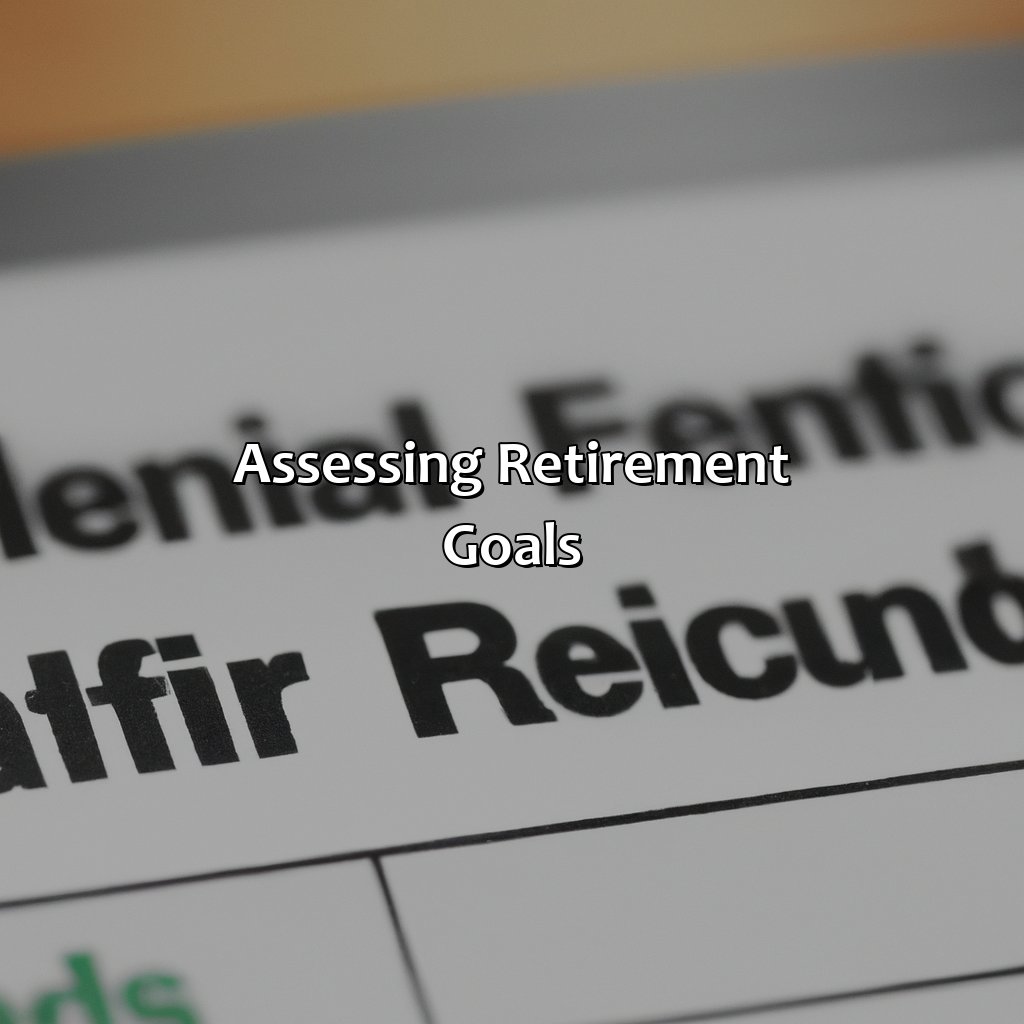
Image credits: retiregenz.com by Yuval Woodhock
Determining Retirement Expenses
Plan with confidence! First, figure out your retirement expenses. This section, called “Determining Retirement Expenses,” has sub-sections. They’re called “Essential vs. Discretionary Expenses” and “Consideration for Unexpected Expenses.” This will help you out.
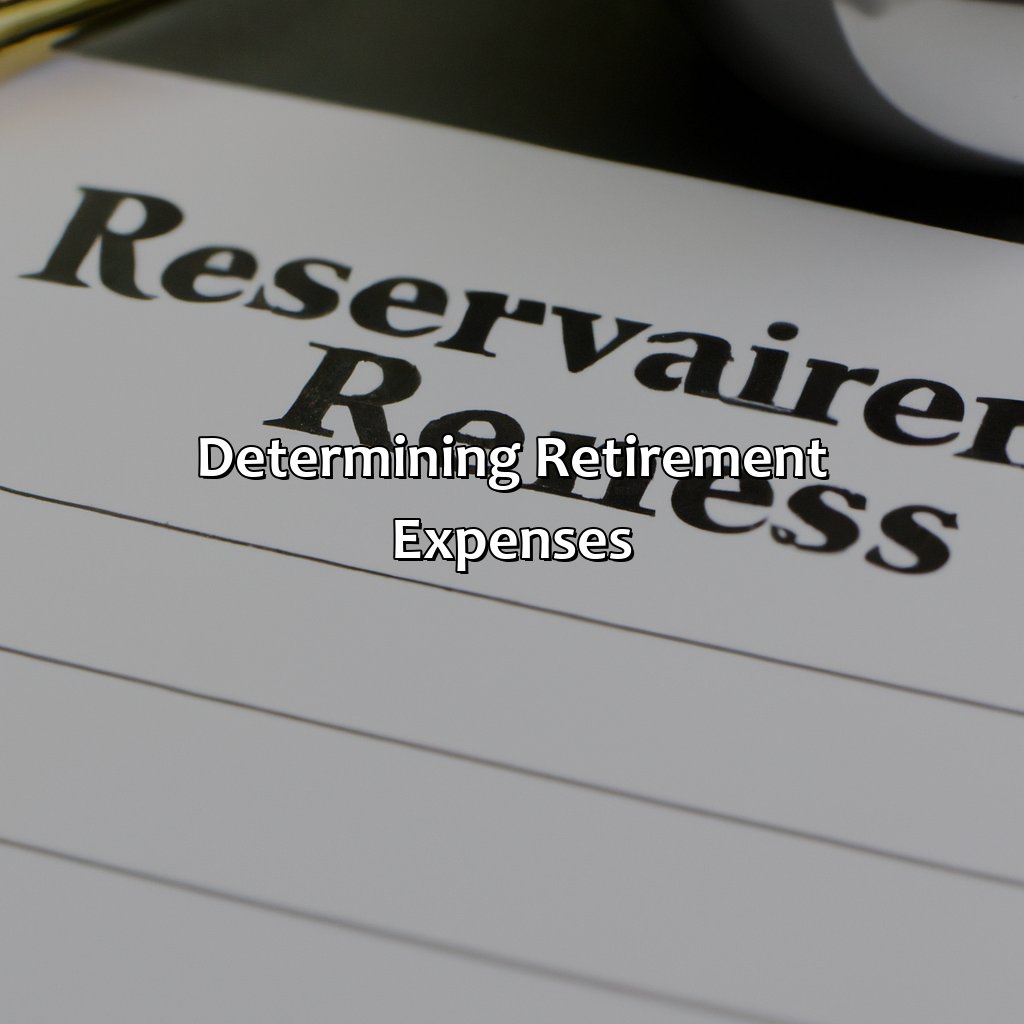
Image credits: retiregenz.com by Yuval Arnold
Essential vs. Discretionary Expenses
Allocating Retirement Funds: Necessities vs. Optional Expenses
Retirement expenses can be classified into two main categories: essential and discretionary expenses. It is crucial to differentiate between the two in order to plan for your retirement and allocate your funds accordingly.
- Essential expenses: These are necessary expenditures that cannot be avoided or reduced without any significant impact on your quality of life. Essential expenses include housing, food, healthcare, transportation, and taxes.
- Optional expenses: Also known as discretionary expenses, these types of expenses are not mandatory but can enhance your lifestyle and provide you with comfort. Optional expenses include entertainment, travel, hobbies, eating out, and luxury purchases.
- Prioritizing: It is important to prioritize essential expenses over optional ones when allocating retirement funds in order to ensure a secure future for yourself.
- Balancing: Balancing the allocation of funds between essential and optional expenses requires careful consideration and planning based on individual circumstances like income level, health situation, etc.
Furthermore, making a budget plan is recommended to monitor spending habits and keep track of how much money you’re spending on each category.
Unique needs like elderly care or medications might make some costs blend between the two categories; thus needing one’s discretion upon allocation.
It’s no surprise that prioritizing necessities over optional items when planning and allocating retirement income is most effective. Moreover, this concept has been proved time-and-again among various successful retirees who managed their finances well enough to enjoy their golden years comfortably.
Retirement planning involves considering the unexpected expenses – like finally being able to afford that world trip you’ve always dreamed of, only to come down with a case of the Bali belly.
Consideration for Unexpected Expenses
Allocating retirement funds can be tricky, especially when considering unexpected expenses that may arise. One consideration is planning for medical emergencies that often incur high costs. It is also essential to factor in home maintenance and unexpected vehicle repairs.
Additionally, setting aside funds for travel, hobbies or other leisure activities can provide necessary relief from monotonous routine. Retirement is a phase where avoiding financial stress becomes very significant, so one must allocate enough funds to cover all kinds of unpredictable expenses throughout this period.
A report by the Transamerica Center for Retirement Studies suggests that almost 68% of retirees experience at least one financially challenging event in retirement, making it imperative to consider all potential scenarios and allocate money accordingly.
Why save for a rainy day when you can save for your entire retirement?
Creating a Retirement Budget
To craft a successful retirement budget, figure out your fixed income sources. Then, uncover possible retirement streams of income. Knowing these two elements can help you allocate your funds in a manner that works best for you.
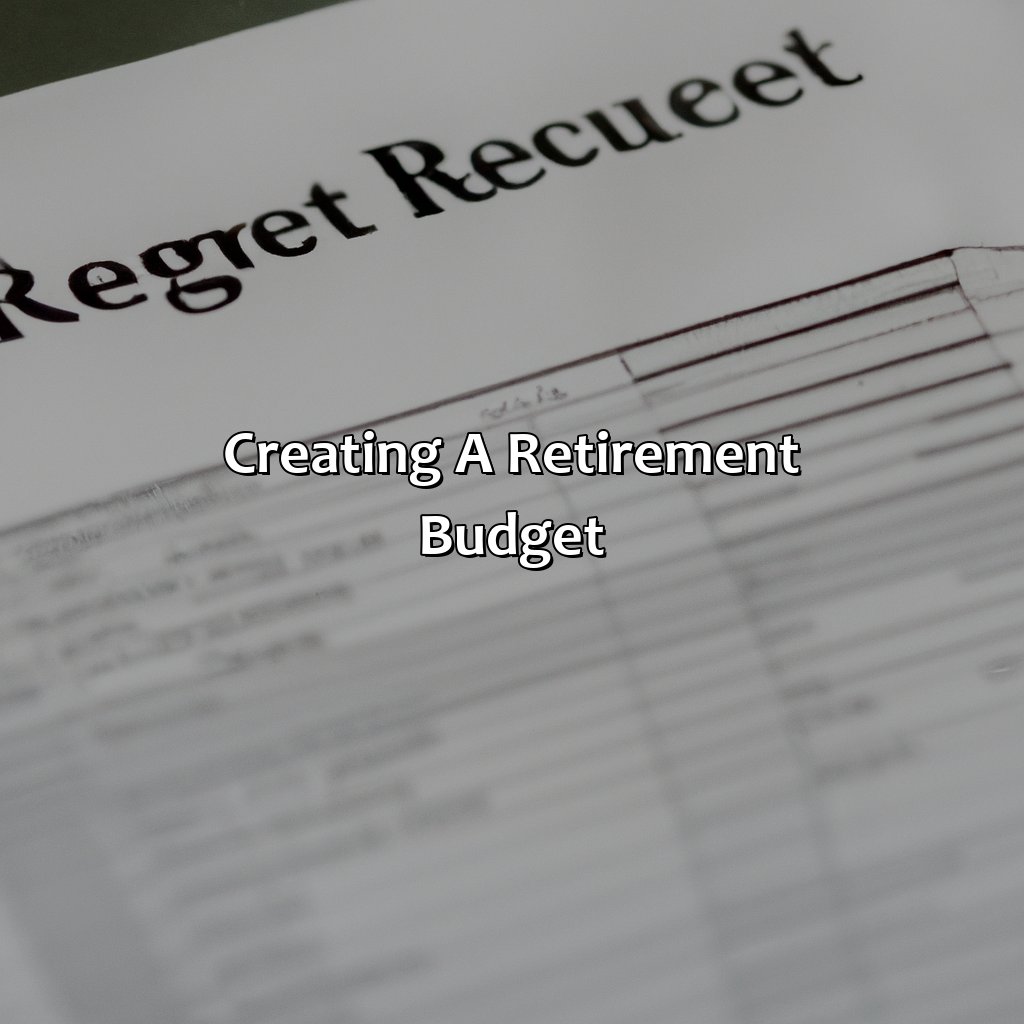
Image credits: retiregenz.com by Joel Duncun
Determining Fixed Income Sources
Determining Steady Revenue Streams for Retirement Planning
Retirement planning is all about ensuring you have enough of a financial backbone to sustain the lifestyle you want to lead, while making the most of your retirement funds. This means that it’s crucial to identify and secure steady revenue streams as part of your planning process.
Reliable income sources for retirement may include social security benefits, pension plans, annuities or rental properties. Each income source will have its own set of requirements and conditions that must be met in order to qualify for income streams. These details should be thoroughly researched before making any decisions on fixed revenue streams.
It’s important to note that many retirees overlook the fact that some revenue streams like social security may require benefit recipients to start claiming payments at certain points in time – possibly even earlier than they would like – so it’s essential to factor this into your retirement planning.
Ultimately, having a clear understanding of these income tools will help ensure you create a suitable and dependable stream of funds for your golden years.
Don’t wait until it’s too late – creating a sound retirement budget should begin as early as possible. Identifying reliable revenue sources is an essential step towards achieving long-term financial stability in retirement, so don’t miss out on securing the funds you need!
Retirement income streams: where you’ll finally have the time to learn how to fish, but you’ll also need to know how to make it rain.
Identifying Potential Retirement Income Streams
Retirees can identify potential income streams for their post-retirement life by conducting research. They can explore various sources of income, such as investments, savings, properties, pensions, and social security. Each of these sources can offer unique benefits and risks. Therefore, retirees must analyze their financial goals and objectives to prioritize and allocate their funds effectively.
Furthermore, retirees can consult with financial planners or advisers to create optimal and sustainable financial plans. These professionals can help them understand the suitability of different investment options based on their risk tolerance, tax status, liquidity needs, and time horizon. By following a well-rounded approach that balances yield potential with risk exposure, retirees can create diversified portfolios that generate consistent returns.
In addition to managing income streams proactively, retirees should also focus on reducing expenses wherever possible. This includes downsizing living arrangements, eliminating wasteful spending habits and adopting a frugal lifestyle without compromising quality of life.
By developing an effective budget plan through the identification of potential retirement income streams in advance of retirement allows senior citizens to enjoy their golden years in peace without battling unexpected financial issues.
Let’s hope your retirement budget doesn’t have more holes than a golf course.
Allocating Retirement Funds
Allocating retirement funds effectively? You’ll need to understand diversification. Plus, employer-sponsored retirement plans, IRAs, and other investment options. All of these sub-sections offer you solutions. To make the most of your retirement savings!

Image credits: retiregenz.com by Harry Washington
Understanding Diversification
Diversification of retirement funds for ideal allocation is critical. In-depth understanding yields better returns. Enhance your financial growth by diversifying into various assets categories such as mutual funds, bonds, or money market funds.
Expanding on the previous point, evaluating risk tolerance and timeline for retirement facilitates diversification. Your investments portfolio should consist of stocks that correspond with your comfort level, together with low-risk investments like index funds to minimize losses.
One important fact about diversification is keeping in mind the correlation between different investments in the portfolio; aligning uncorrelated assets creates better opportunities to hedge against significant losses. Therefore, focus on investing in different asset types that have little to no correlation.
Take Sophie as an example; she retired richer after investing her savings into a balanced allocation across small-cap equities, foreign equities, long-term bonds and high yield bonds. With an allocation of 27% to each category, Sophie mitigated risks associated with typical stock-only portfolios and maximised her returns over time.
Retirement plans sponsored by employers are like a party with a strict dress code – you have to follow the rules if you want to stay until the end.
Employer-Sponsored Retirement Plans
The following are some of the most popular Employer-Sponsored Retirement Plans:
- 401(k) Plans – A popular employer-sponsored retirement plan that allows employees to contribute pre-tax dollars towards their retirement savings.
- Pension Plans – A defined-benefit plan where employers fund the bulk of employee benefits.
- Tax-Sheltered Annuity (TSA) Plans – Another name for 403(b) plans offered by non-profit organizations, hospitals or schools.
- Simplified Employee Pension (SEP) Plan – A type of IRA plan designed specifically for small businesses and self-employed individuals.
- Savings Incentive Match Plan for Employees (SIMPLE) IRA Plan – Combines traditional 401(k) features with IRA rules.
- Profit-Sharing Plans – The employer contributes a portion of its profits into employee accounts.
For instance, employees should always be aware of the company’s matching contributions when selecting a plan. Choosing between fixed contribution plans like Pensions or variable contribution plans like 401(k)s also impacts how one can allocate funds and control risk effectively.
Pro Tip: Employers occasionally offer free financial advice services to help guide their workers through accessing the different types of Employer-Sponsored Retirement Plans that they provide. Communicate with an experienced advisor today!
Giving a little love to your IRA now, will guarantee you’re not giving a little love to McDonald’s now.
Individual Retirement Accounts (IRAs)
For those planning for their retirement, there’s a wealth of financial options out there to choose from. Among these is the option of Individual Retirement Accounts (IRAs), which are personal investment accounts that allow for tax-advantaged savings. These accounts are subject to specific contribution limits and other rules set forth by the Internal Revenue Service (IRS) and come in several different types, including traditional IRAs and Roth IRAs.
With traditional IRAs, contributions can be made with pre-tax money, meaning that they may reduce a person’s taxable income for the year in which they’re made. However, taxes will then be due on the funds when they’re withdrawn during retirement. With Roth IRAs, contributions are made with post-tax money, meaning that withdrawals during retirement can be taken tax-free. There are also some other differences between these two types of accounts that should be considered when deciding which is best for any given situation.
It’s important to note that there are also income limitations associated with contributions to both types of IRA accounts. It’s important to consult with a financial advisor or tax professional before choosing an IRA account type and setting up such an account.
One interesting fact about IRA accounts is that according to data from the Investment Company Institute as reported by Forbes in 2020, Americans hold over $11 trillion in various IRA accounts as of mid-2020 – making them one of the most widely used ways to save for retirement in the country.
Why invest in stocks when you can invest in lottery tickets? Sure, the odds might be worse, but the excitement is unbeatable.
Other Investment Options
If you intend to explore other potential investment avenues, alternative asset classes like commodities, real estate and infrastructure could be considered. With the proper portfolio diversification and risk management strategies, such options may provide long-term growth opportunities outside of more traditional investment instruments like mutual funds or stocks.
These alternative asset classes have various characteristics that distinguish them from traditional investments. Commodities, for example, are tangible raw materials that can be traded on the open market. Real estate is property that you own or rent for commercial or personal purposes while infrastructure encompasses public works projects such as airports and tunnels.
While considering these options may be worthwhile, it is important to note the potential risks associated with each of them. Commodities are susceptible to unpredictable price fluctuations with limited control over market supply and demand. Real estate relies heavily on prevailing economic factors which can cause depreciation in value without sustained rental yield if times are tough.
A few years ago at a retirement seminar, a friend mentioned how he was extremely cautious about putting all of his money into stocks as he preferred a more conservative approach. Instead, he diversified his investments by investing in municipal bonds alongside bond mutual funds as well as alternative investments including real estate trusts and commodity funds. While this strategy worked well for him over the long-term down markets were challenging but overall his portfolio remained stable through a balance of diversified investments.
Keeping an eye on your retirement portfolio is like checking your bank account after a night out – sometimes the numbers just don’t add up.
Monitoring Retirement Portfolio
Monitor your retirement portfolio efficiently. Regular reviews and adjustments are key. Learn the benefits of these practices in “How to Allocate Retirement Funds?“. This will create a strong portfolio tailored to your goals and risk tolerance.
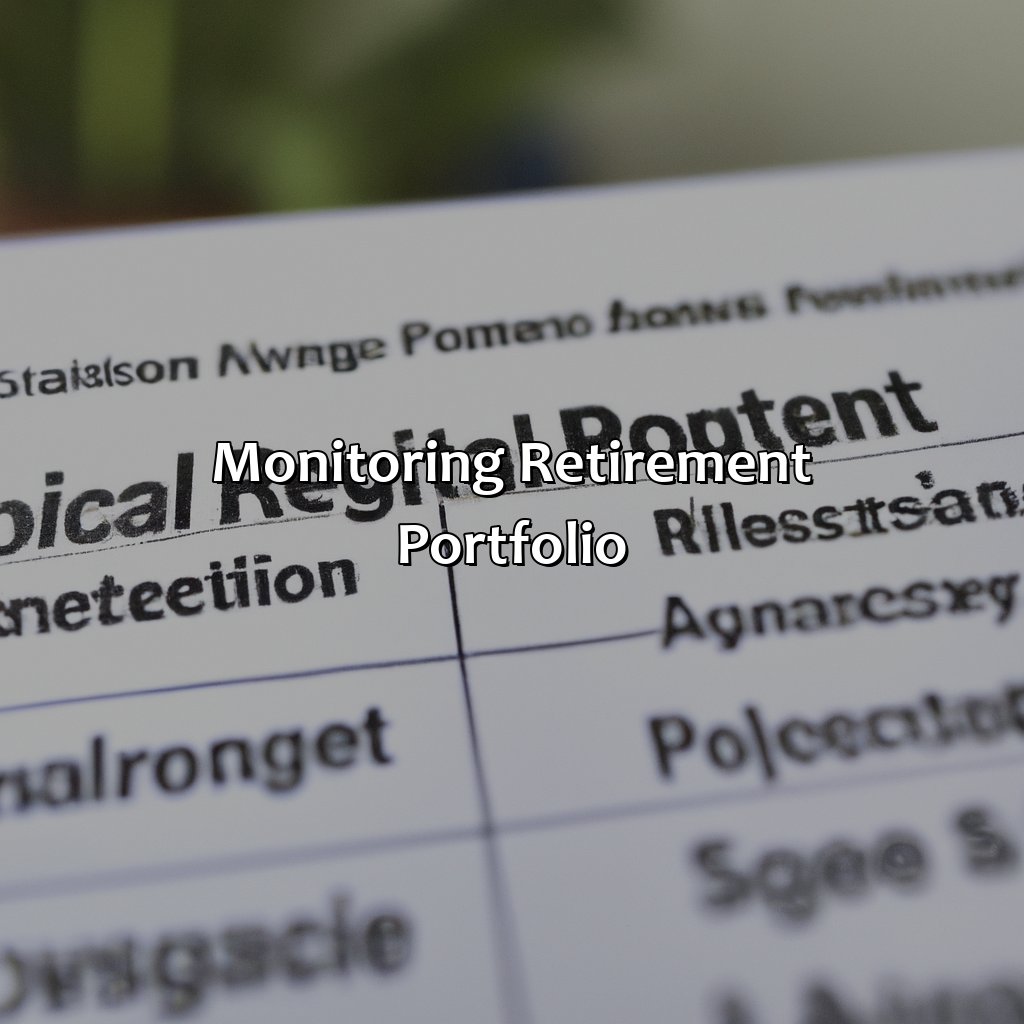
Image credits: retiregenz.com by Joel Woodhock
Regular Portfolio Reviews
Portfolio reviews are an integral part of managing retirement funds. Regular monitoring helps ensure that the portfolio is performing well and is in line with the goals and risk tolerance of the investor. Here are four key points to keep in mind when conducting regular portfolio reviews:
- Review Investment Objectives: Determine whether your investment objectives have changed since you last assessed your portfolio.
- Assess Asset Allocation: Ensure that your asset allocation still aligns with your risk tolerance, age, and other factors.
- Analyze Portfolio Performance: Review performance against established benchmarks, looking for any areas of improvement or underperformance.
- Risk Management Plan: Evaluate the impact different market scenarios may have on your portfolio, and ensure it is optimized to manage risks effectively.
It’s important to note that no single strategy works for everyone as each individual has unique financial circumstances. Therefore, understanding one’s financial goals, current investment holdings, risk tolerance, and future plan will be different from another. Expediting periodic review of one’s portfolio enables investors to make necessary adjustments promptly.
Failing to regularly monitor and review one’s portfolio can result in missed opportunities or, worse still, increase exposure to significant risks. Make a habit of scheduling regular reviews to actively manage assets, reduce anxiety, have peace of mind, and maximize returns. Rebalancing your retirement portfolio is like going to the gym – it’s painful at first, but you’ll thank yourself later.
Rebalancing the Portfolio
Maintaining an optimal distribution of assets in your retirement portfolio is crucial, and it requires monitoring and adjusting the allocation periodically. The process of evaluating and managing the asset mix to realign with your investment goals is known as Portfolio Rebalancing.
Rebalancing enables you to redistribute funds amongst different asset classes, ensuring that you remain diversified while minimizing exposure to risk levels beyond your comfort zone. During this process, investors sell assets that are overrepresented and purchase those that are underrepresented to restore balance.
It’s crucial to note that rebalancing isn’t a one-size-fits-all model; every investor has unique goals, risk tolerance and investment horizons. Choose a strategy that matches your objectives, whether it’s a time-balance approach or a threshold-based approach.
While rebalancing improves portfolio performance by preventing overweighting in specific sectors, frequent changes can lead to increased costs associated with transaction fees and taxes.
Because if you think trying to plan your retirement portfolio on your own is a good idea, you’re probably the same person who thinks they can fix their own plumbing.
Seeking Professional Advice
Want pro advice on how to manage your retirement funds? Consider consulting a financial advisor! They can provide lots of advantages and help you make informed decisions about your investments and retirement. Finding the perfect advisor may be daunting, but it’s necessary to get the best advice.
Let’s look at two solutions to make your retirement planning easier and successful:

Image credits: retiregenz.com by David Duncun
Benefits of Financial Advisors
Financial advisors can provide many benefits when it comes to allocating retirement funds. They offer expert guidance and professional insight to help individuals make informed decisions regarding their finances and future. Here are a few key benefits of working with a financial advisor:
- Customized Retirement Planning
- Tax Efficient Strategies
- Diversified Investment Portfolios
- Risk Management and Analysis
- Counseling on Benefits & Insurance Options
By working with a financial advisor, individuals can receive customized guidance specifically tailored to their unique situations. Advisors can develop tax-efficient strategies while also diversifying investment portfolios to minimize risk. Additionally, advisors can provide counseling on benefit and insurance options that are valuable in retirement planning.
Seeking professional advice from an experienced financial advisor is crucial for securing your retirements’ future. Professional advisement lessens risks and enables retirees to enjoy expected outcomes comfortably. A former client approached his retirement without proper understanding/approach towards investments. After losing most of his savings, they sought advisement from a financial expert but had already lost nearly 85% of their life-long savings by then.
Finding the right financial advisor is like finding a needle in a haystack, except the needle is your retirement savings and the haystack is full of salesmen.
Choosing the Right Advisor
Advisors – Finding the Right One
As retirement plans can be complicated, it is crucial to choose an advisor who can make effective strategies for your retirement funds. Here’s how to find the right advisor.
- Look for certified professionals with minimum experience of 5 years in financial planning.
- Ensure that the advisor has been able to meet their client’s financial goals in the past.
- Do research about their payment model and determine if it aligns with your expectations.
- Transparency in communication is key, check if they are willing to explain complex concepts simply.
It would be helpful to understand that referrals from peers and experts add value. It is also a good practice to interview multiple advisors before deciding on one.
One vital factor in advisers is personalization as every individual has unique requirements for their fund allocation. Remember that an expert adviser will always respect your priorities while creating a long-term strategy.
One retiree seeking guidance on fund allocation but with a conservative outlook sought advice. The adviser suggested investing in Municipal Bonds but considering her low-risk appetite, it wasn’t fitting. The retiree then received advice from another adviser with a balanced approach that resulted in better returns without taking any undue risk.
Just like a good bra, your retirement strategy may need some adjusting as you age.
Adjusting Retirement Strategy
You need to think of various things to get the most out of your retirement money. Life altering events can change your plans. It’s important to keep track of market trends too. Being flexible is key for retirement planning. Here, we’ll look at how to optimize retirement planning.
- Adjusting strategies with life changes: Life’s twists and turns can alter your retirement plan. Be prepared to adjust your strategies to accommodate unexpected events such as illness, disability, or changes in family circumstances.
- Adjusting for market conditions: Keep an eye on market trends and adjust your investment portfolio accordingly. Consider diversifying your investments to minimize risk.
- Having flexibility: Flexibility is key to successful retirement planning. Be open to adjusting your plans as needed to adapt to changing circumstances. Consider alternative retirement sources of income such as part-time work or rental income from property investments.
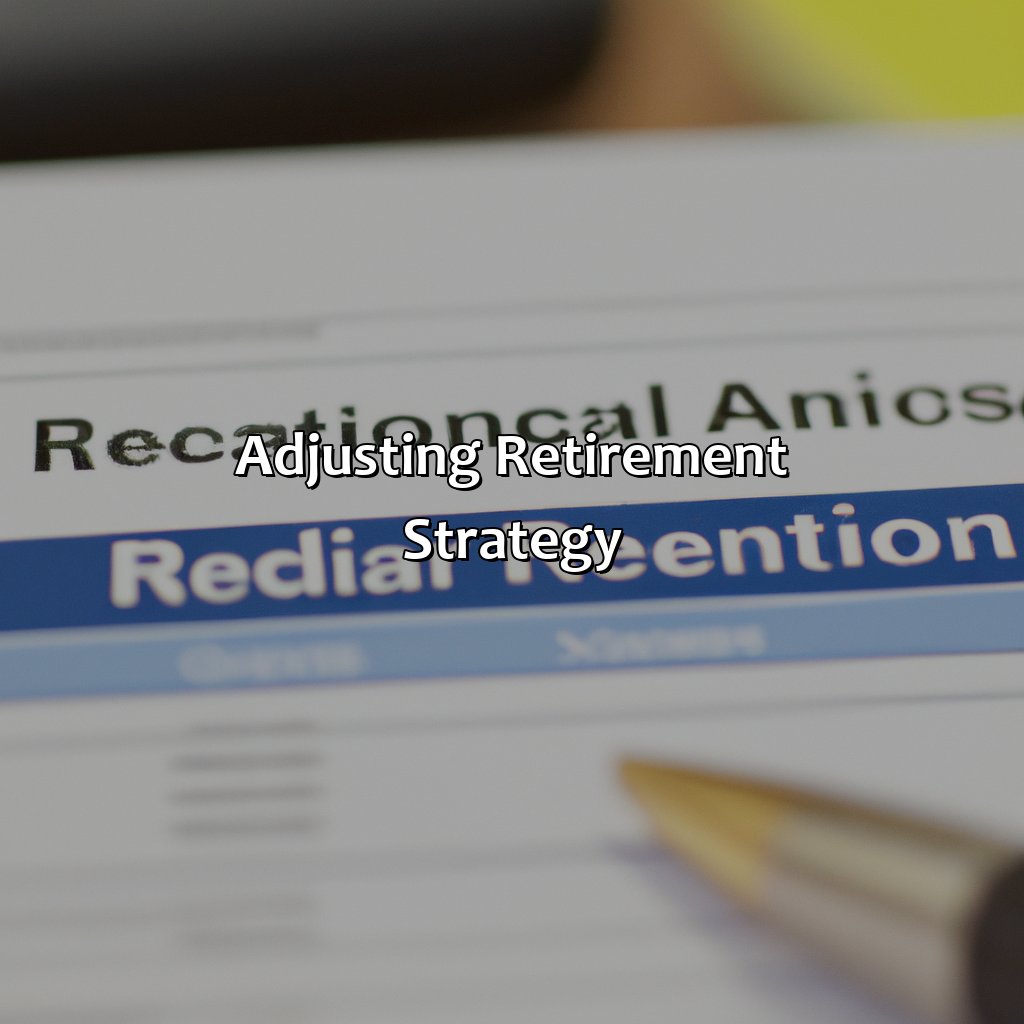
Image credits: retiregenz.com by Joel Washington
Life Changes and Retirement
Retirement requires adjusting your strategies due to changing circumstances. The impact of life changes can affect financial planning, and a reassessment of retirement funds is essential for optimal allocation. It is crucial to consider life changes’ timing, such as marriage, birth or death, and reexamine income needs and tax implications.
Furthermore, the key factors affecting retirement funding should be reviewed regularly, such as inflation rates and investment risks. Proper asset allocation can help balance growth and stability, ensuring that your portfolio meets retirement goals.
To ensure long-term success in retirement planning, it is imperative to consult professional advisors who can tailor strategies that meet personal needs and provide flexibility.
Pro Tip: Consider your desired lifestyle throughout retirement when deciding how to allocate funds. Remember to adjust your strategy according to changing circumstances continually.
Adjusting for market conditions is like trying to navigate a minefield with a blindfold on – it’s risky, unpredictable, and there’s a good chance you’ll end up blowing up your retirement savings.
Adjusting for Market Conditions
Investment Strategies based on Market Evaluation
Retirement Strategy requires adjusting for the market environment. It becomes necessary to adopt a flexible strategy that adapts to changing conditions of the market. By doing so, investors can allocate their funds according to different situations and needs. A well-informed approach is essential in determining an investment plan in which cautiousness plays as significant a role as risk-taking.
In considering adjustments to retirement strategy, staying informed about market trends becomes a crucial factor during your investment planning period. By identifying market variables such as volatility, inflation rate, and industry growth pattern, investors can navigate through risky periods by taking appropriate decisions and making changes along the way.
One must emphasize diversification while allocating resources for long-term gains over short-term profits during retirement planning. Identifying safe-haven investments helps counterbalance potential losses due to volatile readings of securities. Since planning is at least 30-year’s worth of investing action under generally done circumstances, studying options that incorporate safety nets is wise.
Pro Tip: Asset allocation should align with financial objectives while catering to a respective investor’s age and risk tolerance levels.
Flexibility in Retirement Planning
Being adaptable in managing retirement finances adds vital flexibility. A comprehensive retirement strategy involves allocating funds that work for the short and long term, identifying a spend and withdrawal rate, while minimizing tax implications.
When selecting an investment plan, consider the expenses associated. A well-balanced portfolio will help reduce risk levels while potentially increasing returns. Continuously assessing the strategy during retirement ensures adjustments are made in response to market fluctuations.
It’s essential to have clarity on Social Security benefits and how they fit into your overall plan. Other income sources such as rental income or pensions should be taken into account for further diversification.
Pro Tip: Keeping a close eye on fees, taxes, and income generation methods are crucial in maintaining a successful retirement allocation plan.
Five Facts About How To Allocate Retirement Funds:
- ✅ It is recommended to diversify your retirement portfolio with stocks, bonds, and other asset classes. (Source: Investopedia)
- ✅ A common rule of thumb is to subtract your age from 100 to determine the percentage of your portfolio that should be invested in stocks. (Source: Forbes)
- ✅ It’s important to regularly review and adjust your allocations to ensure they align with your goals and risk tolerance. (Source: Fidelity Investments)
- ✅ Target-date funds can be a simple and effective option for retirement investing, but they may not be suitable for everyone. (Source: CNBC)
- ✅ Working with a financial advisor can help you make informed decisions and develop a personalized retirement plan. (Source: Charles Schwab)
FAQs about How To Allocate Retirement Funds?
How do I determine how much money to allocate towards my retirement funds?
Determining how much money to allocate towards your retirement funds largely depends on your current financial situation and future financial goals. Most financial experts suggest saving between 10-15% of your annual salary towards retirement. It’s highly recommended to consult a financial planner to determine an appropriate allocation amount for your specific circumstances.
What types of retirement funds should I consider allocating my funds towards?
There are a variety of retirement funds to consider based on your financial goals and investment preferences. Some common options include 401(k)s, traditional IRAs, Roth IRAs, and annuities. It’s crucial to research and compare the pros and cons of each option before deciding where to allocate your funds.
When is the best time to start allocating funds towards retirement?
The earlier you start allocating funds towards retirement, the better. Financial experts suggest beginning in your 20s or 30s to allow for maximum growth potential over time. However, it’s never too late to start saving for retirement, and any amount you can allocate towards your retirement funds is better than none.
Is diversification important when allocating retirement funds?
Yes, diversification is an essential aspect of allocating retirement funds. It can help protect your funds against market volatility and increase the likelihood of achieving long-term financial goals. Diversifying your retirement funds can also help balance risks and returns across various investments.
How frequently should I review and adjust my retirement fund allocations?
It’s recommended to review your retirement fund allocations at least once a year or during major life changes such as marriage, having children, or a job change. Rebalancing your portfolio is crucial to ensuring your investments align with your changing goals and risk tolerance.
What should I do if I am uncertain about how to allocate my retirement funds?
It’s advisable to seek out the services of a financial advisor if you are uncertain about how to allocate your retirement funds. They can provide valuable guidance and help you create a customized approach based on your unique financial situation and goals.






